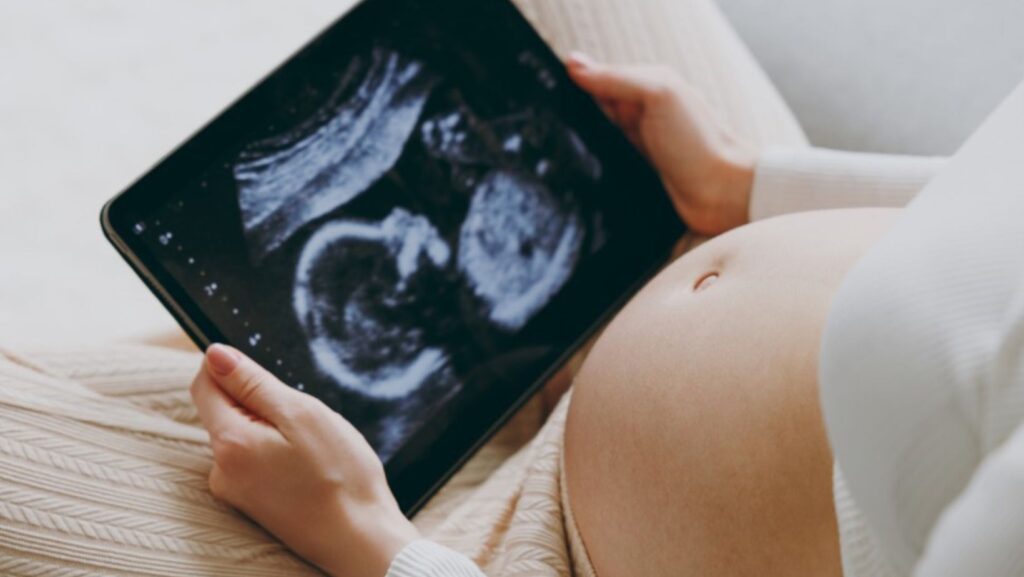There’s nothing quite like watching your baby move on the ultrasound screen. It’s one of those rare, quiet moments in pregnancy when excitement and curiosity come together.
After the appointment, many parents face reports filled with confusing abbreviations and numbers. Learning to read those details goes beyond curiosity. It helps parents understand what’s happening inside the womb and feel more involved.
Here’s how to clearly understand your pregnancy ultrasound results and feel more confident reading them.
What Those Numbers and Letters Really Mean
Every ultrasound report has small codes representing different parts of your baby’s body.
The Crown-Rump Length (CRL) is one of the first measurements doctors take. It tracks your baby’s length from head to bottom and helps estimate gestational age. A slight difference can shift the due date, so early CRL readings matter most.
Next are the head measurements: Biparietal Diameter (BPD) and Head Circumference (HC). These readings monitor brain and skull growth, often changing steadily as the pregnancy progresses. A slightly larger or smaller head is usually nothing unusual. It frequently reflects family traits, like rounder or narrower shapes.
The Femur Length (FL) measures the thigh bone and gives a sense of your baby’s growth pace. A shorter or longer reading often runs in the family. That number tracks nutrition and growth, but can change with position or recent meals.
Finally, the Estimated Fetal Weight (EFW) combines all these measurements to suggest how much the baby weighs. The keyword here is ‘estimated.’ Ultrasounds can’t measure weight precisely, but give a reliable picture across different checkups.
An ultrasound scan for pregnancy, especially by reputable clinics, shows more than growth and gives a glimpse into early development. It can also reveal early signs of certain congenital or developmental conditions. Not every abnormality appears on ultrasound, but it often guides doctors toward further genetic testing.
Reading Beyond the Baby
Pregnancy ultrasound results also reveal how well the environment around the baby is functioning.
The placenta, for instance, might be labeled as anterior, posterior, or low-lying. Those words describe whether the placenta sits at the uterus’s front, back, or lower part. A low placenta early in pregnancy often rises as the uterus expands, easing most concern.
The report also shows an Amniotic Fluid Index (AFI). It reflects how much fluid surrounds the baby, protecting and cushioning it. Slightly high or low levels can result from hydration, timing, or even how the baby is lying.
Some reports include a Cervical Length measurement, especially in later months. It helps identify if the cervix is shortening earlier than expected. Some scans use color imaging to show umbilical cord blood flow and nutrient delivery.
Patterns Matter More Than a Single Reading
What really matters in a scan is how those numbers change across visits. Pregnancy ultrasound results form a pattern doctors use to track steady and balanced growth.
For example, a slightly smaller baby in one area might balance out later. One report may suggest a big baby, but steady growth usually signals normal progress. Comparing several ultrasound scans helps doctors confirm steady growth better than relying on one report.
Early ultrasounds set the timeline, while later scans focus on fetal growth and development. Small differences between readings are common and rarely indicate a problem on their own.
Making Sense of the Images
Ultrasound images may look unclear initially, yet reveal far more than expected. The lighter areas represent bone, while the darker ones show softer tissue or fluid. Some images appear clear, others a bit blurry. That usually depends on how the baby is positioned or how deep the sound waves travel, not the baby’s health.
Some babies nap during scans, so stillness doesn’t necessarily mean something’s wrong. Little kicks, stretches, and yawns show an active baby practicing early movements. If movement feels reduced later in pregnancy, it’s worth paying attention. Even small changes matter, and mothers should trust their instincts if something feels different.

If the sonographer switches to color, it’s not for decoration. Those shades of red and blue map blood flow through the heart or umbilical cord. Watching that movement helps confirm that oxygen and nutrients are circulating well.
When Variation Is Normal
No two scans look exactly alike. Even the same technician can get slightly different numbers from day to day. Machine calibration, baby movement, and body shape can all influence what appears on the screen. A few millimeters’ difference between visits usually falls within the normal range.
Timing plays a big role, too. A low placenta at 20 weeks may rise later, while early growth differences often balance out. What matters most is that growth keeps progressing smoothly.
Every pregnancy follows its own timeline, so online comparisons don’t help. Instead of comparing online, ask your doctor which percentile your baby’s growth falls into. That gives a clearer picture of what’s typical for your pregnancy.
What To Ask After Your Scan
A quick chat after the ultrasound can make a big difference in understanding what you’re seeing. Ask which results matter most, if growth matches past scans, and what needs another look. You can also ask about the placenta, amniotic fluid, or anything you notice on the report. Doctors usually explain what matters most.
Keeping copies of your ultrasound reports can help you follow your baby’s growth story as it unfolds. Seeing those numbers line up across weeks makes the experience more personal and less mysterious.
Wrapping Up
Learning to interpret pregnancy ultrasound results turns a technical report into something meaningful. Each number, image, and note represents a moment of your baby’s journey toward birth. Once understood, those black-and-white images feel familiar, like a visible record of growing life.

